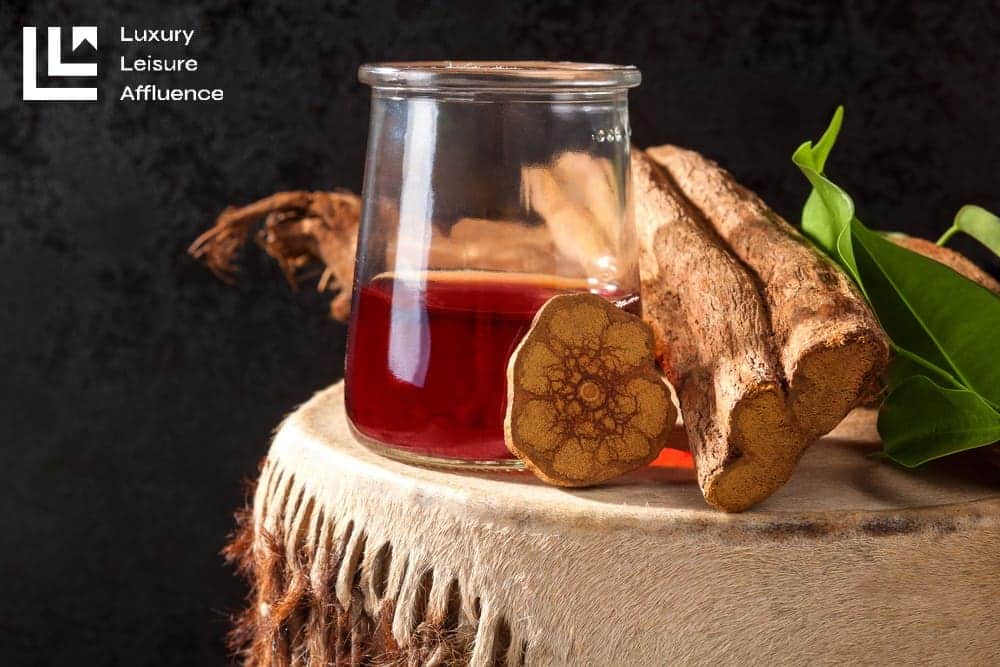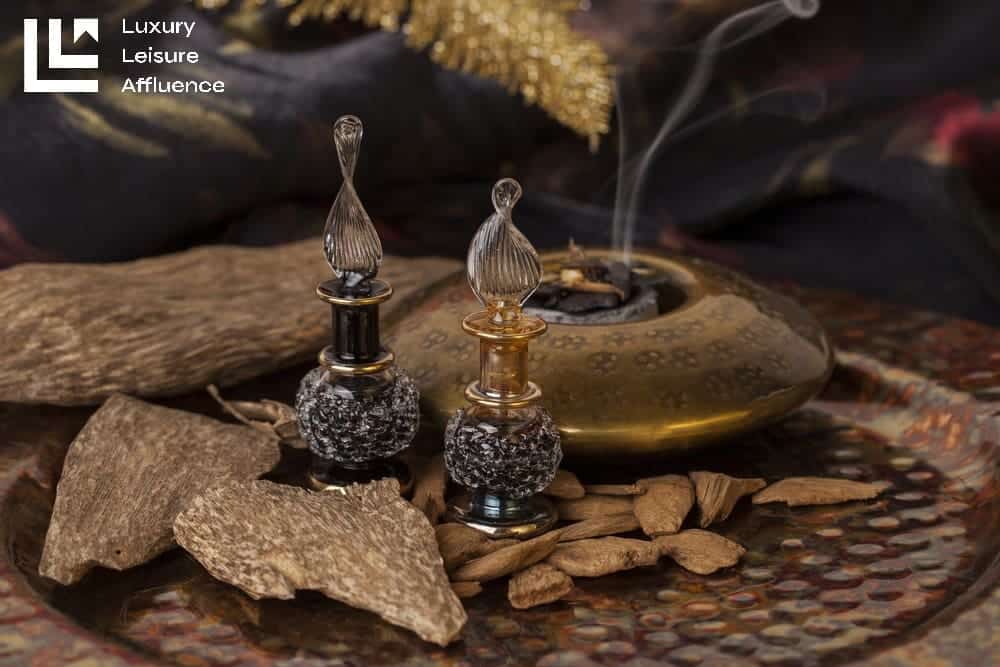Updated On: November 24, 2023 by Aya Radwan
The world of medicinal herbs is rich and diverse, offering a plethora of health benefits. While a wide range of medicinal herbs are easy to obtain and use, some are so rare that obtaining them is a luxury. We delve into the world of the most expensive medicinal herbs to learn about them, exploring why they are so prized, their medicinal usage, some even help beat cancer, and whether you can grow these herbs at home or not.
Most Expensive Medicinal Herbs: Carrying on Old Traditions
Our list of the most expensive medicinal herbs is interesting. We’re certain you’ve heard about several of these before, but how many can you name? Aside from their medicinal qualities, some of these herbs are a delightful, luxurious addition to culinary creations around the world, and others have climbed the list of the world’s luxurious perfumes.
Saffron: The Crimson Spice with Golden Benefits

Saffron, the world’s most expensive spice, is a revered culinary treasure and a potent natural remedy. Prized for its vibrant colour and unique flavour, saffron also holds a wealth of potential health benefits. The crimson spice needs intensive harvesting, where nearly 75,000 saffron blossoms make only a single pound of saffron spice. This massive amount and the intricate harvesting process, where each saffron thread is individually hand-picked from the Crocus Sativus flower, contributes to the spice’s high price.
This expensive medicinal herb has a multitude of benefits. It is an antioxidant powerhouse that helps defend the body against free radicals. The herb’s antioxidants, crocin and crocetin, have shown promise in alleviating oxidative stress, a hallmark of chronic conditions such as heart disease and cancer. Scientific experience proved that this crimson medicinal herb has active compounds that can elevate serotonin and dopamine levels, neurotransmitters that play a crucial role in regulating mood and emotions.
The antioxidants in the saffron exhibited cancer-fighting potential. These elements inhibit tumour growth and induce apoptosis, the programmed death of cancer cells. However, further studies are underway to confirm the capabilities of this medicinal herb.
While saffron’s origins are traced back to Greece or Southeast Asia, its cultivation has spread across the globe. Iran is currently the world’s largest producer of this medicinal herb, accounting for over 90% of global production. It’s possible to grow saffron at home if the climate requirements are met, but we believe it’s more unlikely. Besides its great benefits, large doses of saffron have proven toxic. It can cause nausea, vomiting and even poisoning. In moderate amounts, saffron lends a distinctive flavour and vibrant colour to a wide range of dishes, from traditional Persian dishes to Spanish paellas and Italian risottos.
Goldenseal: The Native Herb with Enduring Remedies
Goldenseal, a native North American herb, has long been revered for its medicinal properties. The Native American tribe used the distinctive yellow root to treat a variety of ailments, from common colds to digestive issues and skin disorders. This expensive medicinal herb has powerful ingredients that are rich in berberine, a compound with antibacterial, anti-inflammatory and antioxidant properties. Scientific research proved that berberine was effective in combating respiratory infections, soothing digestive discomfort and promoting wound healing.
Over the years, overharvesting has caused a decline in the number of goldenseal plants worldwide, making the plant scarce. This practice made this expensive medicinal herb a protected species in many areas. Cultivating goldenseal is challenging due to its specific environmental requirements, requiring a woodland habitat with rich soil and shade. While it is possible to grow goldenseal at home, the need for a special habitat and patience stand in the way. You will wait for several years for the herb to reach maturity and yield a harvestable root.
Like the majority of medicinal herbs, too much will make you sick. Taking more than the recommended dose of goldenseal can cause digestive upset in some individuals. It’s not even recommended for pregnant or breastfeeding women. This medicinal herb has many culinary uses due to its bitter taste, such as herbal teas and tinctures.
Ginseng: The Revered Root with Energy-Enhancing Power

Ginseng, a prized herb with a long and storied history, has been revered for its proven medical influences. This medicinal herb is a robust energy booster where its ginsenoside content stimulates the production of energy-generating molecules in cells. This process aids in reducing fatigue and enhancing physical performance. Ginseng may also help regulate blood sugar levels by increasing insulin sensitivity, a potential benefit for individuals with diabetes.
We can trace ginseng’s origins to northeastern China, Korea and eastern Siberia. After the herb’s worldwide recognition, it became a popular ingredient in supplements and tonics. Ginseng’s high cost stems from its slow growth cycle and high demand in traditional medicine. It takes several years for ginseng roots to mature and reach their full medicinal value. Moreover, its widespread use in Asia, particularly in China and Korea, contributes to its scarcity and value.
Ginseng likes to grow in a habitat similar to its native forest, which puts pressure on whoever tries to grow it at home. The medicinal herb is generally safe in moderate amounts but can cause you insomnia and headaches if you exceed the allowed dosage. On the other side, ginseng can interact with certain medications. So, if you’re taking a prescription drug, it’s best to consult your healthcare provider before using ginseng.
Black Cohosh: The Native Herb with Menopausal Relief Potential
This expensive medicinal herb is native to eastern North America. It has proved its effectiveness in relieving menopause-related symptoms, such as hot flashes and night sweats, where the herb may bind to estrogen receptors to reduce the intensity of the symptoms. Black cohosh has demonstrated potential in relaxing uterine muscles and promoting menstrual flow, which helps reduce menstrual cramps.
Black cohosh grows in shady woodlands with well-drained soil. Authorities have regulated wild harvesting of black cohosh to prevent overexploitation. These factors contribute to the expensiveness and rarity of this medicinal herb. Though challenging, you can grow black cohosh at home if you provide the proper habitat conditions and enjoy waiting for the plant to bloom, which takes several years.
This medicinal herb has roots that go back to the Native American tribes, and they understood the herb’s effective doses and which dose might raise concerns. Rare cases of overdose of black cohosh suffered from liver problems and gastrointestinal discomfort. It is also not recommended for pregnant or breastfeeding women.
Rhodiola: The Golden Root with Adaptogenic Powers

Rhodiola rosea, also known as golden root, is a flowering herb used for centuries in traditional medicine to promote stress relief, lower cortisol levels, and increase serotonin and dopamine. To reduce fatigue, the herb improves energy levels and stamina and increases ATP production, which helps improve sleep quality. Rhodiola enhances cognitive performance by improving attention, concentration and processing speed. This medicinal herb is considered an adaptogen, a substance that helps the body adapt to stress.
Rhodiola is expensive due to the high global demand where individuals seek to reap its health benefits. However, the limited availability of the herb makes it difficult to harvest, and it’s not widely cultivated but hand-harvested, which is time-consuming. This medicinal herb is native to high-altitude regions in Europe and Asia, including the Alps, Scandinavia, Siberia, and the Himalayas.
As with the majority of expensive medicinal herbs on our list, rhodiola requires specific habitat conditions, which might allow you to home-grow them if you can provide them at home. Rhodiola rosea is generally safe for most people when taken in recommended doses. However, it can cause some side effects, such as a dry mouth and dizziness and can interact with blood pressure medications. Despite the various benefits of rhodiola, more research is needed to confirm them, which is why we recommend consulting your doctor before considering this medicinal herb.
Caterpillar Fungus (Cordyceps): The Parasitic Fungus with Potential Health Benefits

Caterpillar fungus, also known as Cordyceps, is a parasitic fungus that has long been used in traditional Chinese medicine for its purported health benefits. This unusual fungus grows on the larvae of insects, eventually replacing the larva’s body with its own fruiting body. Cordyceps has been traditionally used to boost energy, improve immunity, and treat respiratory infections.
Modern research suggests that the active compounds in cordyceps, such as cordycepin and adenosine, have anti-oxidant and anti-inflammatory characteristics which help slow down ageing. Extracts from this expensive medicinal herb demonstrated potential in inhibiting tumour growth and enhancing immune cell function. The adaptogenic properties of cordyceps extracts may enhance oxygen uptake to improve kidney filtration and reduce inflammation in the lungs.
Cordyceps are found primarily on the Tibetan plateau, which means they must be hand-harvested, a labour-intensive and limited process. Moreover, cultivating this medicinal herb in controlled environments is complex because it requires a specific host insect. These elements contribute to the herb’s expensiveness and rarity. Replicating the natural conditions to grow cordyceps is difficult, which means it’s not possible to home-grow cordyceps due to the relationship between the fungus and its host insect.
The effects of an overdose of Cordyceps include mild digestive issues, and it’s not recommended for individuals with autoimmune diseases for fear of stimulating the immune system and exacerbating the symptoms.
Madagascar Periwinkle: A Botanical Gem with Life-Saving Potential

Madagascar periwinkle, a flowering plant native to Madagascar, holds a remarkable distinction: it serves as the source of vinblastine and vincristine, two potent alkaloids that disrupt cell division and revolutionise cancer therapy. Vinblastine proved its effectiveness in treating Hodgkin’s lymphoma, leukaemia and other cancers, while vincristine is strongly effective against childhood leukaemia.
Madagascar periwinkle is an expensive medicinal herb due to the intricate alkaloid extraction process and the fact that only a small amount of alkaloids can be extracted from the plant. Moreover, the extraction process is sophisticated and requires specialized equipment and expertise. The increasing world demand for vinblastine and vincristine fueled its cultivation in various tropical regions besides its native home, Madagascar.
There’s no worry about attempting to grow Madagascar periwinkle at home for decorative reasons, provided you have a warm, humid environment and well-drained soil. The alkaloid extraction process needs specialised equipment and is an intricate process. However, we strongly advise against consuming the medicinal herb without medical supervision. Excessive amounts of the alkaloids are toxic. Only pharmaceutical-grade extracts of vinblastine and vincristine are safe for use in cancer therapy.
Ayahuasca: The Enigmatic Brew with Psychotherapeutic Potential

Ayahuasca, an herbal brew originating from the Amazon rainforest, has long been revered for its psychoactive properties and potential to induce profound spiritual and psychological insights. Approaching ayahuasca must be within the lines of its ancient history and with paid respect to the ancient Amazonians who deeply revered this medicinal herb. The active compounds in this medicinal herb, DMT (N, N-Dimethyltryptamine) and harmaline, act upon the brain’s serotonin system, leading to intense visual and auditory hallucinations, heightened emotions, and altered states of consciousness. These experiences, guided by experienced shamans, can facilitate personal growth and emotional healing.
The legal restrictions placed on the cultivation of ayahuasca’s constituent plants, Banisteriopsis caapi and Psychotria viridis, explain why this medicinal herb is expensive. Countries drew up regulations limiting or prohibiting the use and possession of ayahuasca due to its psychoactive nature. These restrictions and the Amazon rainforest habitat conditions make it impossible to grow ayahuasca at home.
We strongly advise against the use of ayahuasca because its psychoactive effects can be intense and trigger anxiety, fear or other psychological reactions. Any country around the world that permitted the limited use of ayahuasca under specific circumstances limited it to religious ceremonies and under the guidance of qualified professionals.
Agarwood: The Fragrant Resin with Ancient Origins

Agarwood, also known as oud, is a precious resin derived from the Aquilaria tree, a native of Southeast Asia, mainly in Indonesia, Malaysia and Thailand. Prized for its distinctive fragrance and intricate wood grain, agarwood has been revered for centuries in traditional medicine and perfumery. Its captivating aroma, imbued with warm, woody, and slightly smoky notes, has made it an essential ingredient in luxury fragrances and incense.
Powered with antioxidant and anti-inflammatory properties, this expensive medicinal herb helps treat a range of ailments, such as pain relief, digestive issues and respiratory infections. However, Oud is recognised for its delicate and luxurious aroma rather than its medicinal properties. Its essential oil, extracted from the resin, is a coveted ingredient in high-end perfumes and incense, adding depth, complexity, and a touch of mystery to aromatic creations.
The expensiveness of agarwood stems from its scarcity and the unique infection process of the Aquilaria trees to trigger resin production, which is the tree’s defence mechanism against a fungus called Phialophora parasitica. After several years, the resin has matured and developed its luxurious fragrance. These reasons explain why attempting to home-grow this medicinal herb is impractical.
While agarwood has established its rank in the luxurious world of perfumes, the medicinal herb’s healing properties remain under study. It is best to use it under the guidance of qualified healthcare professionals.
This journey through expensive medicinal herbs has been an eye-opening one. Expensiveness can sometimes mean rarity, efficiency, or, in rare cases, strict legal restrictions.











